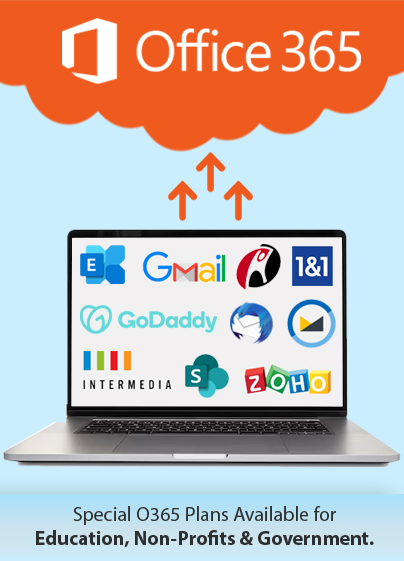How to Migrate From SharePoint 2013 to SharePoint Online?
SharePoint has been the gold standard for collaboration and content management platforms for decades. When Microsoft introduced SharePoint Server 2013, it introduced several revolutionary features, such as the integration with OneDrive for Business, introduction of Community Sites, and microblogging features, that are still in use. However, as with other perpetual license software, Microsoft will stop its extended support for SharePoint 2013 customers in April 2023. While it is possible to upgrade to the latest SharePoint Server 2019, there is no direct path to migrate from SharePoint 2013. In this article, let us explore how to migrate From SharePoint 2013 to SharePoint Online, and the advantages of doing so.
Why Migrate from SharePoint 2013 to SharePoint Online?
There are several advantages of migrating from SharePoint 2013 to SharePoint Online.
- It is always updated, and users will not have to wait for feature releases and security fixes.
- It is managed by Microsoft, and there is less dependence on admins for maintaining the infrastructure and updates.
- There is no “End of Support” for SharePoint Online, which is generally for 10 years in the cases of SharePoint Servers with perpetual licenses.
- It reduces the number of disparate farms by consolidating sites and content to a single Office 365 tenancy.
- Site proliferation can be managed better, saving engineering effort and hosting costs while improving security and technical agility.
- The transition from SharePoint 2013 Server to SharePoint Online in Microsoft 365/ Office 365 is more seamless as the SharePoint Migration Tool (SPMT) can be used to copy on-premises document libraries and regular file shares to SharePoint Online. However, organizations will first have to upgrade SharePoint 2013 to SharePoint 2016 and then SharePoint 2019, as there is no direct upgrade path.
What Is the Procedure for Migrating from SharePoint 2013 to SharePoint Online?
The complexity of migrating from SharePoint 2013 to SharePoint Online depends on the extent to which the existing environment is customized. Here is the typical procedure involved in migrating from SharePoint 2013 to SharePoint Online.
Planning SharePoint 2013 to SharePoint Online Migration
- The SharePoint 2013 to SharePoint Online migration begins with an audit of the existing sites and portals. Their quantity and type would dictate the migration approach, which can range from moving sites and portals as-is (lift and shift) to starting from scratch in the cloud.
- Once the sites to be migrated from SharePoint 2013 to SharePoint Online have been identified, the next step is to consider governance before migrating the sites. This involves specifying the extent to which different stakeholders control the migration and access, aligning on-premises security configurations with the cloud, and framing policies for using SharePoint in the cloud.
- After laying down the governance plan, businesses have to sort out where the different types of workloads have to be moved to the cloud. For example, companywide internal portals can be migrated to Office 365 SharePoint publishing portals, personal content to OneDrive for Business, and group and organization collaboration workloads to Office 365 SharePoint Online team sites. This concludes the planning stage of the SharePoint 2013 to SharePoint Online migration.
Executing SharePoint 2013 to SharePoint Online Migration
Executing the SharePoint 2013 to SharePoint Online migration can be a long process and can vary on a case-to-case basis. Here is the typical process involved in migrating from SharePoint 2013 to SharePoint Online.
- Building new sites, the way they should work on SharePoint Online, rather than migrating old sites from SharePoint 2013.
- Lifting and shifting to SharePoint Online from SharePoint 2013 with the same capabilities and the same look and feel.
- Refactoring existing custom solutions and portals in SharePoint Online in Office 365.
- Replicating the on-premises SharePoint 2013 taxonomy structure in SharePoint Online for consistency.
- Consolidate details of root sites in a single source of truth and update the documentation for using SharePoint Online.
Post Migration and Pre-Launch Activities
After the sites have been migrated to SharePoint Online, complex workflows, integrations, and workloads such as ETL for business intelligence purposes, need to be re-linked. The source SharePoint 2013 and the destination SharePoint Online environments have to be cross-referenced to confirm whether the migration is successful. Scripts may have to be written for specific tasks, such as creating and configuring new sites from a request in a SharePoint Online list. Additionally, changes in Office 365 and SharePoint Online will have to be monitored daily to assess their impact on the SharePoint 2013 to SharePoint Online migration, especially if it is a protracted process.
Apps4Rent Can Help with SharePoint 2013 to SharePoint Online Migration
Most organizations have to take into account a wide range of considerations relating to the broader Office 365/ Microsoft 365 environment while migrating from SharePoint 2013 because, while technically possible, SharePoint 2013 would not normally be migrated on its own to SharePoint Online. Even with the SharePoint Migration Tool, there are technical challenges when there are too many sites, in moving highly customized sites or supporting scenarios involving a combination of cloud and on-premises data.
As a Tier 1 Microsoft CSP, Apps4Rent can help businesses in migrating from on-premises solutions to the cloud and can help to overcome these challenges with a combination of the right tools and deep expertise. Contact our Microsoft certified experts, available 24/7 via phone, chat, and email for migration and hosting assistance.

Get FREE migration from SharePoint to Office 365